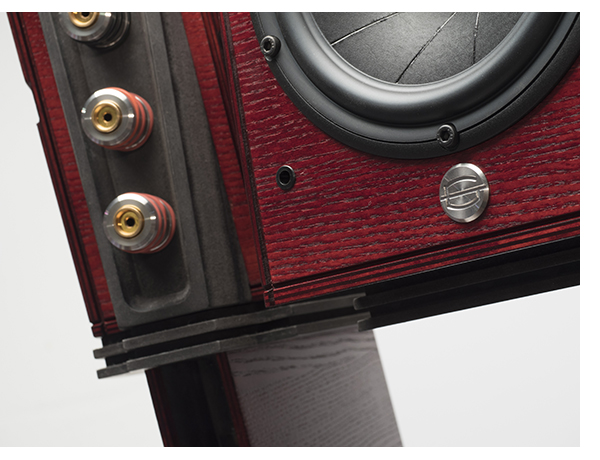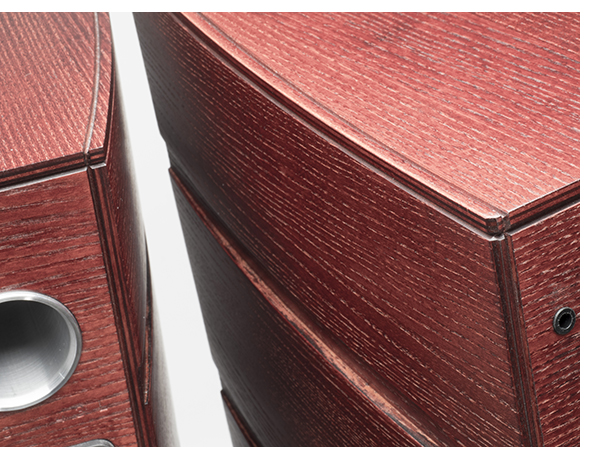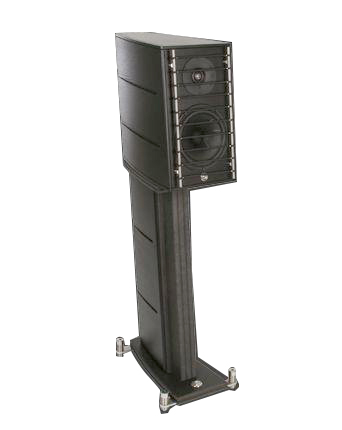GamuT Audio’s RS3i Superior Sound Indeed
By Rob Johnson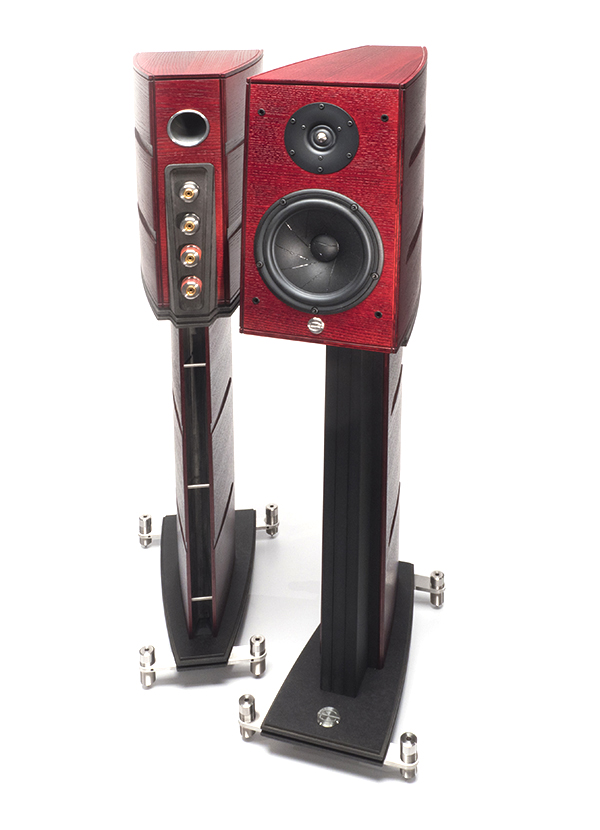 At TONEAudio, we’ve had the chance to review several GamuT products, including the marvelous RS5 floorstanding speakers. The RS5s certainly set a high bar, and we eagerly awaited the opportunity to test the smallest sibling in the RS line, the stand-mounted RS3. Would the more diminutive Danish beauties blow our socks off like their bigger brothers?
At TONEAudio, we’ve had the chance to review several GamuT products, including the marvelous RS5 floorstanding speakers. The RS5s certainly set a high bar, and we eagerly awaited the opportunity to test the smallest sibling in the RS line, the stand-mounted RS3. Would the more diminutive Danish beauties blow our socks off like their bigger brothers?
GamuT’s chief designer, Benno Meldgaard, shared his top goals for the company’s flagship RS Series. First, he wanted exceed the capability of their previous “S” series in every way. After poring over every aspect of the design and build, GamuT gave the revised “RS” Superior moniker to the new speakers. Secondly, rather than focusing on charts, graphs, and numbers defining the RS prowess, Meldgaard’s speaker design escaped further scrutiny and tweaking only when the RS voice met the GamuT team’s unanimous agreement in listening tests. Subjective judgements count. Statistics may represent accuracy, but beautiful music is judged in the ears of the beholder.
In my own room, the speakers exhibit a flat frequency response, but the level of musical engagement they provide certainly reinforces the achievement of GamuT’s overriding design mission: delivering great music.
Stunning Surfaces
Twin RS3s arrive together in a single wooden crate, weighing in at about 250 lbs. Our backs certainly were better off because of the attached wheels, allowing ease of movement in our environment. Inside the mammoth crate, a carefully constructed and padded cradle supports and protects the speakers from damage in transit. As with the other GamuT speakers we’ve used, you simply pop the crate out, remove the two bars holding them in place and slide them out. Where a few premium speakers can take hours to get unboxed and in place, this is a five-minute operation with GamuT. Impressive.
The matching stands arrive attached to the monitors, so there’s no assembly required. Some potential buyers might want to use their own stands to cut acquisition cost, but that’s not an option with the RS3. Stands and speakers come as a package deal. The integrated stands serve two purposes: one functional, and one aesthetic. First, they provide a rock-solid base for the speakers, including a metal outrigger stand at the bottom for added stability. Threaded spikes facilitate adjustments necessary for ideal speaker placement. Secondly, the accompanying stands are a stunning part of the overall speaker package. The beautiful wood finish matches the speaker set perfectly, and the cantilevered appearance of the speaker-stand combination offers a stunning visual draw complementing the requisite functionality.
The speakers feature a sloped, time-aligned face placing the tweeter a little further back from the listener than the woofer. Since higher frequencies travel faster than their lower counterparts, this design gives the low notes a head start toward the listener, and all the frequencies arrive at his or her ears simultaneously to achieve the greatest sonic cohesion.
Other than the ruby finish of our sample pair, a prospective GamuT owner has a choice of three other wooden finishes: onyx, ivory, or maroon. Regardless of color choice, the external façade of the speaker is a marvel to behold. Beneath the outer finish, each speaker body is comprised of an amazing 21 layers of wood. Various types and thicknesses of wood reduce cabinet resonance and add rigidity to supplement the internal bracing. Such a hefty build comes with an equally substantial weight. Each speaker tips the scale at 101 lbs. (46 Kg). Dimensions, including stands, are 41.6” (1059mm ) tall, with a width and depth of 8.9” (226mm) and 18” (456mm) respectively. The depth measurement includes binding posts and grilles.
A two-way RS3 design includes a one-inch tweeter assembly, described by GamuT as a ring-radiator, silk cone Neodymium Magnet system. Lower frequencies are delivered by a seven-inch combined midrange/woofer driver featuring a paper cone doped with natural oils. The RS3 front grille features a minimalist configuration, comprised of 10 black elastic-like strands stretching horizontally across the speaker front, and connected to vertical metal bars near the speaker edges. If you have small children who may be tempted to touch the speakers, be warned that the grilles will do little to protect the sensitive woofer and tweeter beneath.
Every listener’s room is different, so GamuT includes some helpful instructions to optimize speaker placement. In addition to written recommendations, GamuT provides an Excel spreadsheet allowing an RS3 owner to plug in the length and width of their listening space. An immediate calculation returns measurements for ideal RS3 placement. When placed at those coordinates, GamuTs perform their best for imaging and accurate frequency response. This calculator is a real time-saver, giving a new owner a substantial head start toward audio nirvana.
After general placement is complete, two more setup steps must be executed for the best possible sound. These must be completed by ear. First, toe-in adjustments help get the most from the speakers. In my case, twisting the speakers about 30 degrees inward offers the best combination of detail, musicality, and holographic imaging. As a final step, GamuT suggests leaning the speakers slightly forward toward the listening seat for the best possible sound. The outrigger base of the speakers, and the threaded spikes built in, make this process simple using an Allen wrench. Applying the same number of twists to left and right side spikes ensures the speakers remain vertical while the rear is elevated and the front is lowered. As a final check, a carpenter’s level (or phone app) can help ensure the speaker pair are locked in at an identical, forward-leaning angle.
The RS-series speaker binding posts are unique, and frankly, rather frustrating. Thick, knob-like structures conceal a very wide, cone-like post underneath. With this post design, spade-terminated speaker cables are rendered unusable. Banana terminations, or spade-to-banana adapters are necessary. The speakers do not include jumpers either, so be prepared to use your own jumpers or a bi-wired configuration.
Once the speakers start playing, put on your seatbelt. Wow. Just…wow. From the get-go, the RS3s impress. There’s nothing slow, laid back, or overly romantic about the RS3’s sonics. However, there’s nothing strident, etched, or overly accentuated either. There’s simply a high level of realism when voicing a performance. It’s easy to enjoy these speakers for all-day listening sessions without any ear fatigue.
No matter what musical genre is played, the RS3s achieve a miraculous balance of characteristics that leave this listener craving nothing. Sonic chameleons, the RS3s can portray with equal aplomb the warmth of a lush vocal performance, the dynamic swings of an orchestral ensemble, or the punch and speed of a vibrant rock track. Few speakers I’ve encountered seem to excel to this degree with any recording thrown at them.
Specified to reproduce frequencies as low as 34Hz, the RS3s are not quite full range. However, bass is a surprising strength of these monitors. In my own listening space, I find little roll-off at the lower limits of the RS3’s claimed range. Bass is taut, tuneful, and true. Even with the subterranean notes inherent in Bill Laswell and Jah Wobble’s Radioaxiom, the speakers never exhibit strain in producing satisfying bass. Yes, the sofa and kitchen cabinet doors did rumble. That said, those craving the deepest growling bass may desire the addition of a subwoofer, or perhaps one of the full-range speakers in the RS lineup.
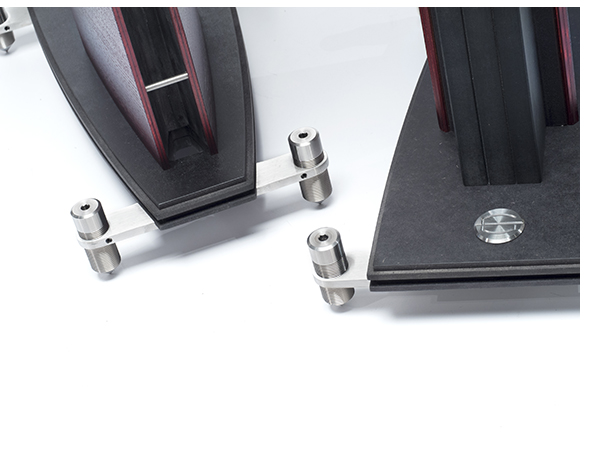 Highs are rendered with similar delight. RS3s boast frequency extension up to 60 kHz, well beyond human hearing and into the sonic realm of the beluga whale. Not having any sea creatures on hand, I’ll have to take GamuT’s word for that. The frequencies I can hear, like the subtleties of cymbal rides and crashes, are portrayed with both force and delicacy as the recording dictates. Shimmer and decay float effortlessly into the room. Piano notes render with both a firm strike and ambient reverberation. Soprano vocal crescendos may coax forth a shiver down the spine, but never a wince from stridency.
Highs are rendered with similar delight. RS3s boast frequency extension up to 60 kHz, well beyond human hearing and into the sonic realm of the beluga whale. Not having any sea creatures on hand, I’ll have to take GamuT’s word for that. The frequencies I can hear, like the subtleties of cymbal rides and crashes, are portrayed with both force and delicacy as the recording dictates. Shimmer and decay float effortlessly into the room. Piano notes render with both a firm strike and ambient reverberation. Soprano vocal crescendos may coax forth a shiver down the spine, but never a wince from stridency.
The upper and lower frequency extremes sandwich an equally beguiling midrange, which frankly left me stunned. Vocals like k.d. lang’s on Ingenue have such a natural and unveiled sound, it’s easy to be immersed in an experience like having a private concert. While each breath a vocalist takes can be perceived due to the RS3’s command of subtle audio cues, that detail never distracts from the bigger-picture performance.
Imaging through the RS3 speakers is among the very best I’ve experienced. When placed correctly, the speakers manage the feat of wrapping audio elements far beyond the speaker boundaries. That, combined with the realism of the RS3’s sound, admittedly caused me on occasion to twist my head in surprise toward a stray, unexpected sound projected into the periphery of the room.
The RS3s blend in with the soundstage so well, with eyes closed and a finger extended, I have difficulty pinpointing the speaker bodies. Sound seemingly floats around the speakers, rather than emitting from them. Sonic elements extend into the distance behind the rear room wall, up to the ceiling, and wrap well into the room. It’s a truly immersive and three-dimensional experience that left me tethered to the listening seat for many late night RS3 listening sessions.
Summing Strengths
To answer the question posed at the beginning of this review: Yes, my socks were blown off by the RS3, landing in a smoldering heap in the corner of the room. The RS3s are among the most engaging speakers I have experienced.
I remain adamant there is no such thing as a universally “best speaker” since listener preferences, upstream equipment, and room acoustics all weigh into the equation. Taking those variables into account in my own case, I have not yet encountered another speaker that achieves such a Goldilocks-like “just right” balance for my own sonic preferences. RS3s offer a perfect combination of detail, soundstaging, speed, realism, and overall musicality. It’s a fantastic achievement.
In short, these speakers are keepers. If you are in the lucky position of having $20k in your speaker budget, I cannot recommend the GamuT RS3 speakers highly enough. Be sure to put the GamuT RS3 on your shortlist for audition. I plan to start saving now for both the RS3s and a new pair of socks.
MSRP: $19,900
www.gamutaudio.com (Factory)
www.audioskies.com (US Distributor)
PERIPHERALS:
Analog Source: SME Model 10 with SME V and Model 10 tonearms. Dynavector 17D3 and Denon DL-103R cartridges
Digital Sources: Mac Mini, Roon Music Service, dCS Debussy
Amplification: Burmester 911 mk3
Preamplification: Coffman Labs G1-B
Speakers: Sonus faber Olympica III, JL Audio Dominion Subwoofers
Cables: Jena Labs
Power: Torus AVR 15 Plus, RSA Mongoose power cords
Accessories: ASC tube traps, Mapleshade Samson audio racks, Coffman Labs Equipment Footers, AudioQuest Jitterbug, Atomic Audio Labs Mac Mini stand




